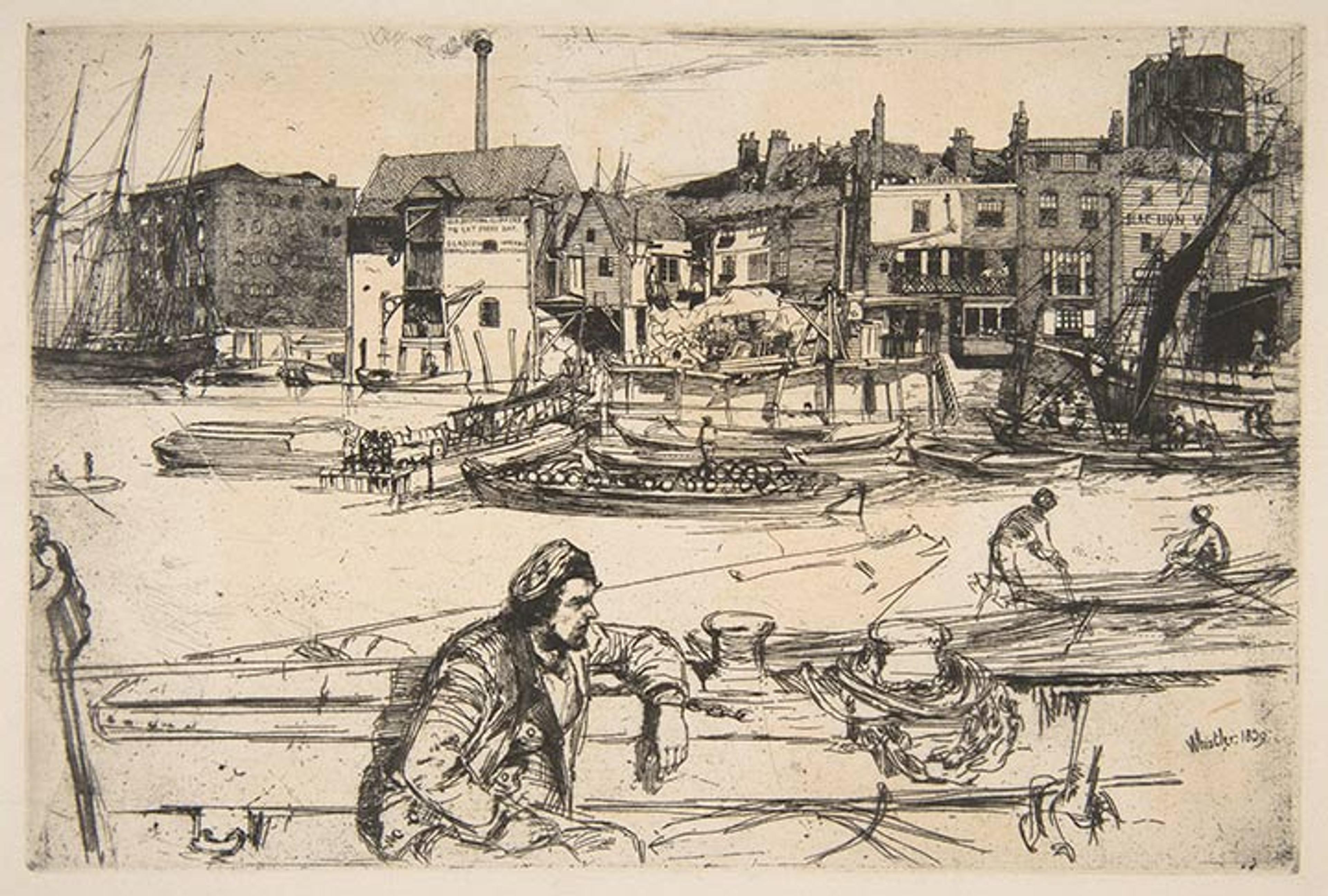On Tuesday, May 23, our third grade class from the South Bronx Classical Charter School I traveled to The Met to explore the galleries. We took the train from our school in the Bronx to 86th Street, and walked through the rain in our school lines. On the way, we were exhausted, we wanted to eat, and our feet hurt, but then we turned the corner and saw the impressive museum. We were afraid the trip would be boring, but when we saw so many people lined up outside, we knew it would be interesting.

Collections Management Assistant Tara Keny with #MetKids Reporters Anelisa, Brycen, and Naheem and their third grade class in the Drawing and Prints galleries. Photo by Rachel Epley
Once we put our things away, it was time to begin exploring! First, we went upstairs to see the Modern and Contemporary art galleries, and we stopped to sketch what we saw. We couldn't stop looking at Autumn Rhythm (Number 30), which is a large painting by an artist named Jackson Pollock (he's the guy who splatters paint). He splattered it with black, gold, brown, and gray. The colors sound plain, but the painting wasn't. The way he combined them made them interesting. The contemporary painting we really loved was Chuck Close's painting Lucas I, because when you were far away, it looked like an ordinary man, but when you got close, you saw it was actually tiny boxes that made up a grid, each with their own colors.
Then, we went to the The Robert Wood Johnson, Jr. Gallery to meet Tara Keny, collections management assistant in the Department of Drawing and Prints. Once there, we saw the exhibition Drawings and Prints: Selections from the Permanent Collection and got to speak with her. We saw really great details in the art. They had magnifying glasses that we could carry around and look at the pictures up close with. We got to see the strokes and marks artists used to create the pictures, and that reminded us of the Chuck Close painting we saw because from far away they just looked like normal pictures, but up close you could see how the artist made the picture.

James McNeill Whistler (American, 1834–1903). Black Lion Wharf, 1859. Etching; fourth state of four (Glasgow); Sheet: 11 7/16 x 16 1/8 in. (29 x 41 cm), plate: 6 x 9 in. (15.2 x 22.8 cm). The Metropolitan Museum of Art, New York, Gift of Susan Dwight Bliss, 1967 (67.630.59)
At first we thought we were looking at drawings, but Tara explained that they were actually prints. We were amazed by the process; she told us about how they have to make the block and then use ink to stamp it on the paper. It made us think it must have taken a long time. Tara also told us what it means to curate something and how she got her job at the Museum. She said that she had to work hard and study specific art and artists so that she could teach other people about them. We thought it was so interesting that Tara had her own wall that she put together.
Did you know? Curators research, care for, and select the art you see in The Met's galleries and exhibitions. You can watch curators at work, making decisions about how and where to hang the artwork, in #MetKids—How Does the Met Decide How and Where to Hang the Art?:
We'd been to the Museum a lot before, so we were worried that there wouldn't be anything new to see, but we discovered all kinds of new stuff. Here are some tips we have for other kids visiting The Met:
- Pay close attention to the details of the artwork. You can find hidden surprises and see how the artist drew the work.
- You should bring a pencil and sketch out a drawing of the art as best you can! It's fun and helped us remember our favorite works.
- Make sure you are with people who want to talk about art with you. We had a lot of fun and talked about stuff that we don't usually talk about at school.
- Pay close attention to all of the changing art in the Museum! Tara showed us where they were putting up the artwork of the week. Each week someone can choose a new work to highlight.
- Have fun!
The #MetKids team would like to send out a warm hello and genuine thanks to all the kid reporters out there. Want to tell your teacher about class trips to The Met? Tell them to check out K–12 School Groups for some helpful info to get them started. Did your class visit us? Email us to tell us about it, and don't forget to share your insider tips!